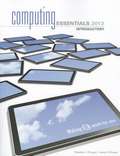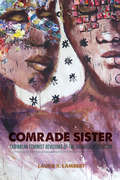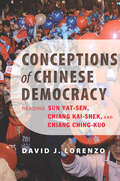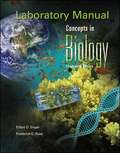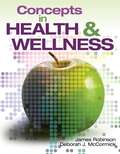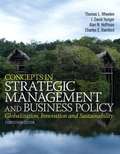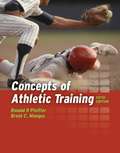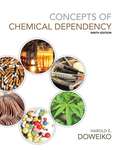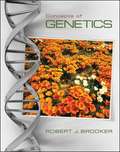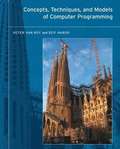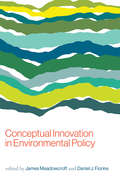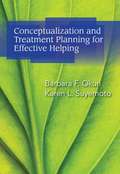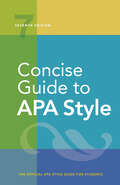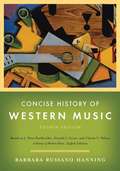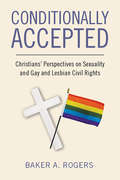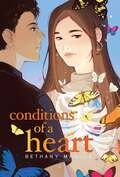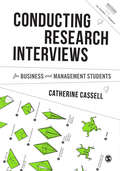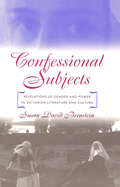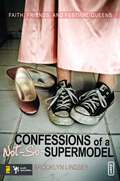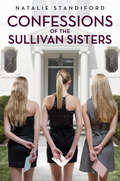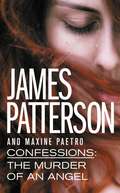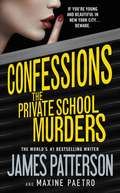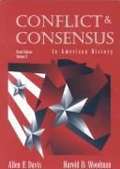- Table View
- List View
Computing Essentials 2013 Introductory Edition: Make IT Work for You
by Timothy J. O'Leary Linda I. O'LearyComputing Essentials 2013 allows you to Make IT Work for You through relevant Explorations, Ethics and Environment themes throughout each chapter.
Comrade Sister: Caribbean Feminist Revisions of the Grenada Revolution (New World Studies)
by Laurie R. LambertIn 1979, the Marxist-Leninist New Jewel Movement under Maurice Bishop overthrew the government of the Caribbean island country of Grenada, establishing the People’s Revolutionary Government. The United States under President Reagan infamously invaded Grenada in 1983, staying until the New National Party won election, effectively dealing a death blow to socialism in Grenada.With Comrade Sister, Laurie Lambert offers the first comprehensive study of how gender and sexuality produced different narratives of the Grenada Revolution. Reimagining this period with women at its center, Laurie Lambert shows how the revolution must be recognized for its both productive and corrosive tendencies. Lambert argues that the literature of the Grenada Revolution exposes how the more harmful aspects of revolution are visited on, and are therefore more apparent to, women. Calling attention to the mark of black feminism on the literary output of Caribbean writers of this period, Lambert addresses the gap between women’s active participation in Caribbean revolution versus the lack of recognition they continue to receive.
Conceptions of Chinese Democracy: Reading Sun Yat-Zen, Chiang Kai-Shek, and Chiang Ching-Kuo
by David J. LorenzoAn accessible and critical introduction to the political writings of three seminal figures in modern Chinese democratic thought.Author and political scholar David J. Lorenzo examines the democratic writings of Sun Yat-sen, Chiang Kai-shek, and Chiang Ching-kuo, providing a coherent summary that situates their ideas within the broader traditions of political theory. His comparative study allows the reader to understand each leader’s perspective while highlighting important contradictions, strengths, and weaknesses. Lorenzo further considers the influence of their writings on political theorists, democracy advocates, and activists on mainland China.Students of political science and theory, democratization, and Chinese culture and history will benefit from the book’s substantive discussions of democracy. Scholars and specialists will appreciate the larger arguments about the influence of these ideas and their transmission through time.
Conceptions of Chinese Democracy: Reading Sun Yat-sen, Chiang Kai-shek, and Chiang Ching-kuo
by David J. LorenzoClose attention to the writings of the founding fathers of the Republic of China on Taiwan shows that democracy is indeed compatible with Chinese culture.Conceptions of Chinese Democracy provides a coherent and critical introduction to the democratic thought of three fathers of modern Taiwan—Sun Yat-sen, Chiang Kai-shek, and Chiang Ching-kuo—in a way that is accessible and grounded in broader traditions of political theory.David J. Lorenzo’s comparative study allows the reader to understand the leaders’ democratic conceptions and highlights important contradictions, strengths, and weaknesses that are central to any discussion of Chinese culture and democratic theory. Lorenzo further considers the influence of their writings on political theorists, democracy advocates, and activists on mainland China.Students of political science and theory, democratization, and Chinese culture and history will benefit from the book's substantive discussions of democracy, and scholars and specialists will appreciate the larger arguments about the influence of these ideas and their transmission through time.
Concepts in Biology Lab Manual
by Eldon D. Enger Frederick C. RossThe exercises constituting this laboratory manual are intended to supplement the text Concepts in Biology.
Concepts in Health and Wellness
by Deborah J. Mccormick James RobinsonConcepts in Health and Wellness provides postsecondary students with the essential body of personal health information that they can use to develop a lifetime of wellness skills. The text will help you enhance your motivation to develop the knowledge and skills necessary to ensure optimal wellness throughout adulthood.
Concepts in Strategic Management and Business Policy: Globalization, Innovation and Sustainability
by Thomas L. Wheelen J. David Hunger Alan N. Hoffman Charles E. BamfordFor Strategic Management and Business Policy courses. Class-tested approach to Strategy with new focus on environmental sustainability. Wheelen and Hunger's class-tested approach to teaching Strategy is brought into sharper focus with a new theme: environmental sustainability. By bringing the sustainability theme into focus, this text equips students with the strategic concepts they will need to know as they face issues such as climate change, global warming and energy availability.
Concepts of Athletic Training Fifth Edition
by Ronald P. Pfeiffer Brent C. MangusThis outstanding introductory text presents key concepts pertaining to the field of athletic training in a comprehensive, logically sequential manner that will assist future professionals in making the correct decisions when confronted with an activity-related injury or illness in their scope of practice.
Concepts of Chemical Dependency (Ninth Edition)
by Harold E. DoweikoCONCEPTS OF CHEMICAL DEPENDENCY, Ninth Edition, provides comprehensive coverage and the latest information on a full spectrum of substance use disorders and the compounds commonly abused. Topics include the abuse of and addiction to alcohol; how the active agent in marijuana, THC, affects neural growth and development; the emerging body of evidence suggesting a relationship between marijuana abuse and psychotic disorders; the emerging body of evidence suggesting that marijuana is not as benign as it was thought to be a few years ago; and the abuse of cough syrups. Adding to the book's usefulness and relevance, Doweiko also covers topics not usually discussed in other substance abuse texts, including abuse of anabolic steroids, inhalants, infectious diseases associated with substance abuse, how the "war on drugs" has actually contributed to the problem of substance abuse/addiction in this country, and the "medical marijuana" debate. This edition includes new information on synthetic marijuana, mephredone, and dextromethorphan, among other substances; updates reflecting the new DSM-5; and a new chapter on the Biopsychosocial Model of Addiction. Students report that they appreciate the author's balanced approach, which allows them to form their own opinions, in contrast to some books that "preach" that "drugs are bad for you."
Concepts of Genetics
by Robert J. BrookerThis book is intended for students who want to gain a conceptual grasp of the various fields of genetics, incorporating current trends in the field.
Concepts, Techniques, and Models of Computer Programming
by Peter Van-Roy Seif HaridiThis innovative text presents computer programming as a unified discipline in a way that is both practical and scientifically sound. The book focuses on techniques of lasting value and explains them precisely in terms of a simple abstract machine. The book presents all major programming paradigms in a uniform framework that shows their deep relationships and how and where to use them together. After an introduction to programming concepts, the book presents both well-known and lesser-known computation models ("programming paradigms"). Each model has its own set of techniques and each is included on the basis of its usefulness in practice. The general models include declarative programming, declarative concurrency, message-passing concurrency, explicit state, object-oriented programming, shared-state concurrency, and relational programming. Specialized models include graphical user interface programming, distributed programming, and constraint programming. Each model is based on its kernel language--a simple core language that consists of a small number of programmer- significant elements. The kernel languages are introduced progressively, adding concepts one by one, thus showing the deep relationships between different models. The kernel languages are defined precisely in terms of a simple abstract machine. Because a wide variety of languages and programming paradigms can be modeled by a small set of closely related kernel languages, this approach allows programmer and student to grasp the underlying unity of programming. The book has many program fragments and exercises, all of which can be run on the Mozart Programming System, an Open Source software package that features an interactive incremental development environment.
Conceptual Innovation in Environmental Policy (American and Comparative Environmental Policy)
by James Meadowcroft Daniel FiorinoConcepts and their role in the evolution of modern environmental policy, with case studies of eleven influential concepts ranging from “environment” to “sustainable consumption.”Concepts are thought categories through which we apprehend the world; they enable, but also constrain, reasoning and debate and serve as building blocks for more elaborate arguments. This book traces the links between conceptual innovation in the environmental sphere and the evolution of environmental policy and discourse. It offers both a broad framework for examining the emergence, evolution, and effects of policy concepts and a detailed analysis of eleven influential environmental concepts.In recent decades, conceptual evolution has been particularly notable in environmental governance, as new problems have emerged and as environmental issues have increasingly intersected with other areas. “Biodiversity,” for example, was unheard of until the late 1980s; “negative carbon emissions” only came into being over the last few years. After a review of concepts and their use in environmental argument, chapters chart the trajectories of a range of environmental concepts: environment, sustainable development, biodiversity, environmental assessment, critical loads, adaptive management, green economy, environmental risk, environmental security, environmental justice, and sustainable consumption. The book provides a valuable resource for scholars and policy makers and also offers a novel introduction to the environmental policy field through the evolution of its conceptual categories.ContributorsRichard N. L. Andrews, Karin Bäckstrand, Karen Baehler, Daniel J. Fiorino, Yrjö Haila, Michael E. Kraft, Oluf Langhelle, Judith A. Layzer, James Meadowcroft, Alexis Schulman, Johannes Stripple, Philip J. Vergragt
Conceptualization and Treatment Planning for Effective Helping
by Barbara F. Okun Karen SuyemotoOkun and Suyemoto's book addresses theory and skills for continuing beyond the first few sessions with a client, thus helping students take the "next step" from a basic understanding of interviewing skills to a conceptualization of the counseling process. CONCEPTUALIZATION AND TREATMENT PLANNING FOR EFFECTIVE HELPING teaches students how to integrate the many pieces of the helping process (e. g. , theoretical orientation, the person of the therapist, the person of the client, the contexts that affect the clients, the therapy relationship, the context of the therapy, the skills and resources available, etc. ) into a conceptualization that will foster efficacy in creating positive change.
Concise Guide to APA Style: 7th Edition (OFFICIAL)
by American Psychological AssociationConcise Guide to APA Style, Seventh Edition is the official APA Style resource for students. Written for high school and undergraduate students, instructors, and writers learning APA Style, this easy-to-use pocket guide is adapted from the seventh edition of the Publication Manual of the American Psychological Association. It provides complete guidance for new writers on effective, clear, and inclusive scholarly communication and the essentials of formatting papers and other course assignments. The seventh edition has been thoroughly revised and updated to reflect best practices in scholarly writing and publishing. Full color throughout Content relevant to a range of majors and courses, including psychology, social work, criminal justice, communications, composition, education, business, engineering, and more New chapter focused on student papers Sample student title page, paper, and annotated bibliography Streamlined APA Style headings and in-text citations New chapter on writing style and grammar Chapters on punctuation, lists, italics, spelling, capitalization, abbreviations, numbers, and statistics Latest bias-free language guidelines More than 20 new sample tables and figures Comprehensive guidelines on citation to help writers credit their sources appropriately and avoid plagiarism and self-plagiarism More than 100 new reference templates and examples, including traditional sources (e.g., journal articles, books, dissertations, and reports) plus many others (e.g., social media, webpages and websites, legal)
Concise History of Western Music (Fourth Edition)
by Barbara Russano HanningBased on A History of Western Music, by J. Peter Burkholder, Donald Jay Grout, and Claude V. Palisca, Concise History of Western Music, Fourth Edition, offers authoritative coverage of the essential works and genres in Western music history. By setting musical events into a memorable historical and cultural context, Concise History of Western Music provides a history students will read and remember.
Conditionally Accepted: Christians' Perspectives on Sexuality and Gay and Lesbian Civil Rights
by Baker A. RogersThis book explores Mississippi Christians’ beliefs about homosexuality and gay and lesbian civil rights and whether having a gay or lesbian friend or family member influences those beliefs. Beliefs about homosexuality and gay and lesbian rights vary widely based on religious affiliation. Despite having gay or lesbian friends or family members, evangelical Protestants believe homosexuality is sinful and oppose gay and lesbian rights. Mainline Protestants are largely supportive of gay and lesbian rights and become more supportive after getting to know gay and lesbian people. Catholics describe a greater degree of uncertainty and a conditional acceptance of gay and lesbian rights; clear differences between conservative and liberal Catholics are evident. Overall, conservative Christians, both evangelical Protestants and conservative Catholics, hold a religious identity that overshadows their relationships with gay and lesbian friends or family. Conservative religion acts as a deterrent to the positive benefits of relationships with gay and lesbian people.
Conditions of a Heart
by Bethany MangleFor fans of Talia Hibbert and Lynn Painter comes a funny and unflinchingly honest story about a teen who must come to terms with her disability and what it means for her identity, her love life, and her future.Brynn Kwan is desperate for her high school persona to be real. That Brynn is head of the yearbook committee, the favorite for prom queen, and definitely not crumbling from a secret disability that&’s rapidly wearing her down. If no one knows the truth about her condition, Brynn doesn&’t have to worry about the pitying looks or accusations of being a faker that already destroyed her childhood friendships. She&’s even willing to let go of her four-year relationship with her first love, Oliver, rather than reveal that a necessary surgery was the reason she ignored his existence for the entire summer. But after Brynn tries to break up a fight at a pep rally and winds up barred from all her clubs and senior prom, she has nothing left to prop up her illusion of being just like everyone else. During a week-long suspension from school, she realizes that she doesn&’t quite recognize the face in the mirror—and it&’s not because of her black eye from the fight. With a healthy sister who simply doesn&’t understand and a confused ex-boyfriend who won&’t just take a hint and go away like a normal human being, Brynn begins to wonder if it&’s possible to reinvent her world by being the person she thought no one wanted: herself.
Conducting Research Interviews for Business and Management Students (Mastering Business Research Methods)
by Catherine CassellPart of SAGE's new Mastering Business Research Methods series, conceived and edited by Bill Lee, Mark N. K. Saunders and Vadake K. Narayanan. The series is designed to support business and management students with their research-based dissertations by providing in-depth and practical guidance on using a chosen method of data collection or analysis. The books are written in a concise and accessible way, and contain a range of features, including checklists and a glossary, designed to support self-guided research. In Conducting Research Interviews, Catherine Cassell guides you through conceptualizing the interview, preparing for the research interview, conducting the interview, examples, and conclusions and next steps. View the complete list of new and forthcoming Mastering Business Research Methods series
Confessional Subjects: Revelations of Gender and Power in Victorian Literature and Culture
by Susan David BernsteinSusan Bernstein examines the gendered power relationships embedded in confessional literature of the Victorian period. Exploring this dynamic in Charlotte Bronta's Villette, Mary Elizabeth Braddon's Lady Audley's Secret, George Eliot's Daniel Deronda, and Thomas Hardy's Tess of the d'Urbervilles, she argues that although women's disclosures to male confessors repeatedly depict wrongdoing committed against them, they themselves are viewed as the transgressors. Bernstein emphasizes the secularization of confession, but she also places these narratives within the context of the anti-Catholic tract literature of the time. Based on cultural criticism, poststructuralism, and feminist theory, Bernstein's analysis constitutes a reassessment of Freud's and Foucault's theories of confession. In addition, her study of the anti-Catholic propaganda of the mid-nineteenth century and its portrayal of confession provides historical background to the meaning of domestic confessions in the literature of the second half of the century.Originally published in 1997.A UNC Press Enduring Edition -- UNC Press Enduring Editions use the latest in digital technology to make available again books from our distinguished backlist that were previously out of print. These editions are published unaltered from the original, and are presented in affordable paperback formats, bringing readers both historical and cultural value.
Confessions of a Not-So-Supermodel: Faith, Friends, and Festival Queens (Invert Ser.)
by Brooklyn E. LindseyWho you are and who you want to be don’t always match up. Like most teenage girls, you’ve probably spent lots of time in front of the mirror wondering what you’ll be when you grow up—or dreaming of who you’ll become. Is it a supermodel, an actress, a dancer, or is it a businesswoman, a mom, or even a pastor? Brooklyn Lindsey grew up dreaming of being a supermodel. She even had a chance to do some modeling and became a festival queen. Her experiences taught her a lot about what she did and didn’t want in life. But it wasn’t until she became a youth pastor that she realized God had already set her “supermodel” dream in motion. God had plans for her to be a different kind of “supermodel.” God has a plan for you, too—and it’s probably bigger than anything you could ever imagine. Read along as Brooklyn shares stories of triumph and tragedy as an aspiring model, and learn how your faith and your friends play a significant role in who you are and who you’ll become. In Confessions of a Not-So-Super Model you’ll begin to reshape the way you see yourself and the way you dream. You’ll discover that being a supermodel doesn’t always require fabulous hair and a great figure.
Confessions of the Sullivan Sisters
by Natalie StandifordFrom the author of HOW TO SAY GOODBYE IN ROBOT, the story of a fractured family and three sisters' secretsThe Sullivan sisters have a big problem. On Christmas Day their rich and imperious grandmother gathers the family and announces that she will soon die . . .and has cut the entire family out of her will. Since she is the source of almost all their income, this means they will soon be penniless. Someone in the family has offended her deeply. If that person comes forward with a confession of her (or his) crime, submitted in writing to her lawyer by New Year's Day, she will reinstate the family in her will. Or at least consider it.And so the confessions begin....
Confessions: The Murder of an Angel (Confessions #4)
by James Patterson Maxine PaetroIn the dramatic conclusion of the #1 New York Times bestselling series, Tandy Angel's next murder case could be her own!Tandy Angel is losing her mind-or so she thinks. Even as she's forced to fight for the family company, she's imagining new dangers in every shadow. And as her detective prowess is called into question and her paranoia builds, she has to face the very real possibility that the stalker she's convinced will take her life could be all in her head-or the very real danger that finally brings her down.
Confessions: The Private School Murders (Confessions #2)
by James Patterson Maxine PaetroIn the sequel to the #1 New York Times bestseller Confessions of a Murder Suspect, James Patterson keeps the confessions coming breathlessly as Tandy Angel delves deeper into her own dark history.Wealthy young women are being murdered on Manhattan's exclusive Upper West Side, and the police aren't looking for answers in the right places. Enter Tandy Angel. The first case she cracked was the mystery of her parents' deaths. Now, while she's working to exonerate her brother of his glamorous girlfriend's homicide, she's driven to get involved in the West Side murder spree. One of the recent victims was a student at Tandy's own elite school. She has a hunch it may be the work of a serial killer, but the NYPD isn't listening to her . . . and Tandy can't ignore the disturbing fact that she perfectly fits the profile of the killer's targets. Can she untangle the mysteries in time? Or will she be the next victim?
Conflict and Consensus in Modern American History, Volume 2
by Harold D. Woodman Allan DavisA look at American politics during the last 150 years and a discussion of the developments in political theory.
